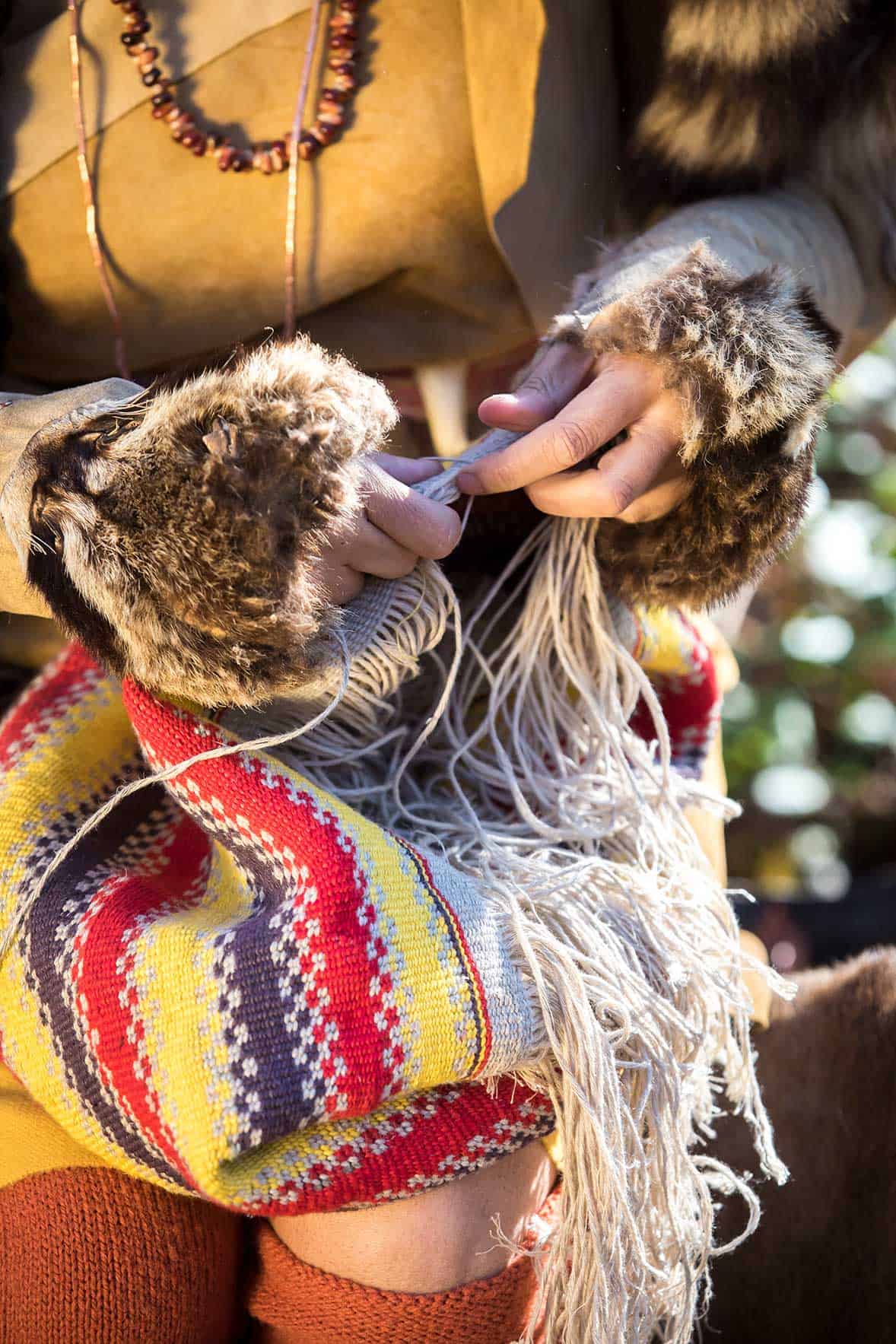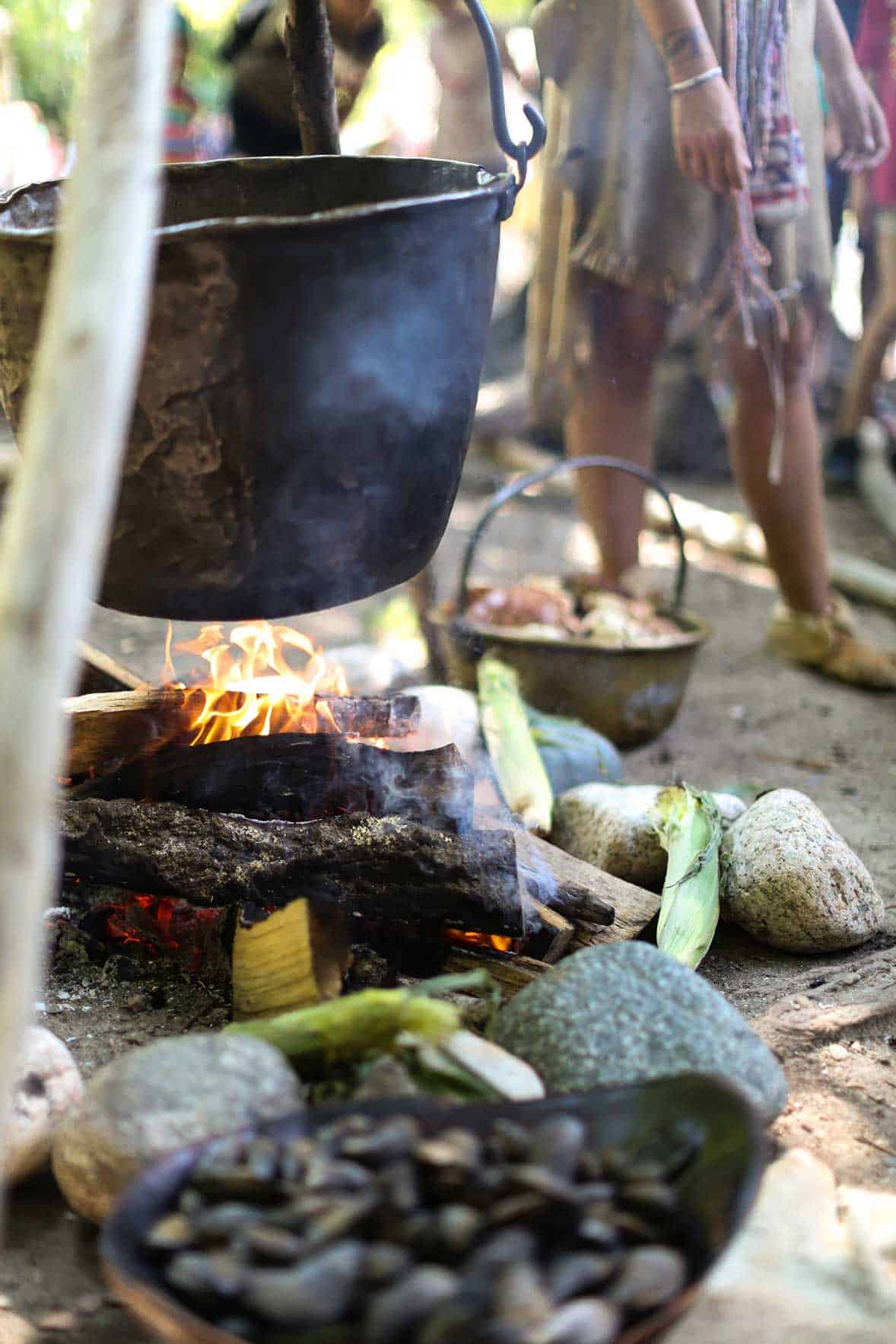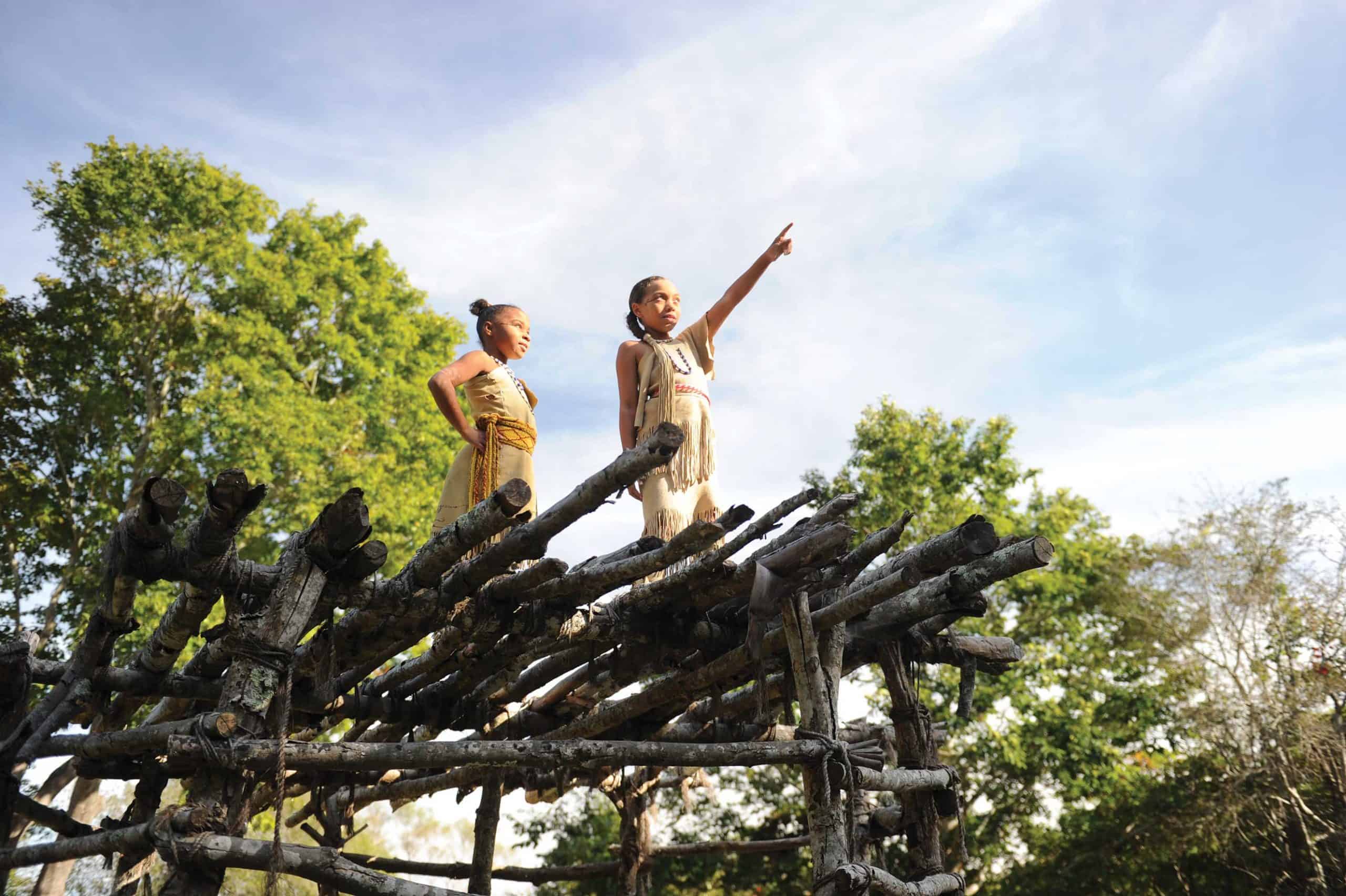Kerri Helme helps preserve Wampanoag culture at Plimoth Plantation and beyond.
By Lannan M. O'Brien
Portrait photography by Julia Cumes
Many people have heard the story of the English colonists’ journey to Plymouth in 1620 and their first interactions with the Wampanoag people. But too often, the portrayal of native history barely scratches the surface.
Known as “The People of the First Light,” the Wampanoag have called this region of Massachusetts home for more than 10,000 years, carrying with them an abundance of stories and cultural traditions. Kerri Helme, a New Bedford resident and member of the Mashpee Wampanoag Tribe, believes it’s never too late to tell these truths. In fact, she does so every day as Plimoth Plantation’s Indigenous Cultural Programs Manager.
“There are so many sides to our story,” says Helme, who is a key member of Plimoth Plantation’s Wampanoag Homesite, an outdoor “living history” exhibit situated along the Eel River. Museum visitors tour traditional wetus (Wampanoag homes) and learn from native people how their ancestors lived in the 17th century. For the past 50 years, says Helme, the exhibit has successfully represented a single family’s summer and fall encampment in that time period. But with her help, the museum is breathing new life into the homesite to better represent the diversity of Wampanoag culture.


“This is a great place to be able to show people that all cultures are different over time—our language can change over time, our artwork can change over time, our songs and dances have evolved to reflect the time that we live in,” says Helme.
In the past, visitors to the homesite would have entered a sandy clearing where there were several examples of seasonal homes. Native tour guides would explain how the area would have looked in the 17th century. Helme recently led an effort to restructure the homesite to more accurately represent how people would have lived throughout four seasons. With less time spent describing the basic layout of the homes, staff members have more time to share aspects of Wampanoag life, such as their songs, dances and oral history. In the future, the museum plans to offer a variety of children’s programming and an auditory experience as people enter the homesite.
Helme’s role at Plimoth Plantation has also allowed her to pursue another passion: archaeology. Among several ongoing projects, she has been studying the Wampanucket Site, one of the earliest-known Wampanoag archaeological sites, where some of the tribe’s oldest artifacts have been found. “This site was continuously inhabited for 13,000 years,” says Helme. “This gives us an opportunity to talk about these old artifacts here [at the museum], and give people an idea of how long we really have been here.”
For more information about Plimoth Plantation, visit plimoth.org.

